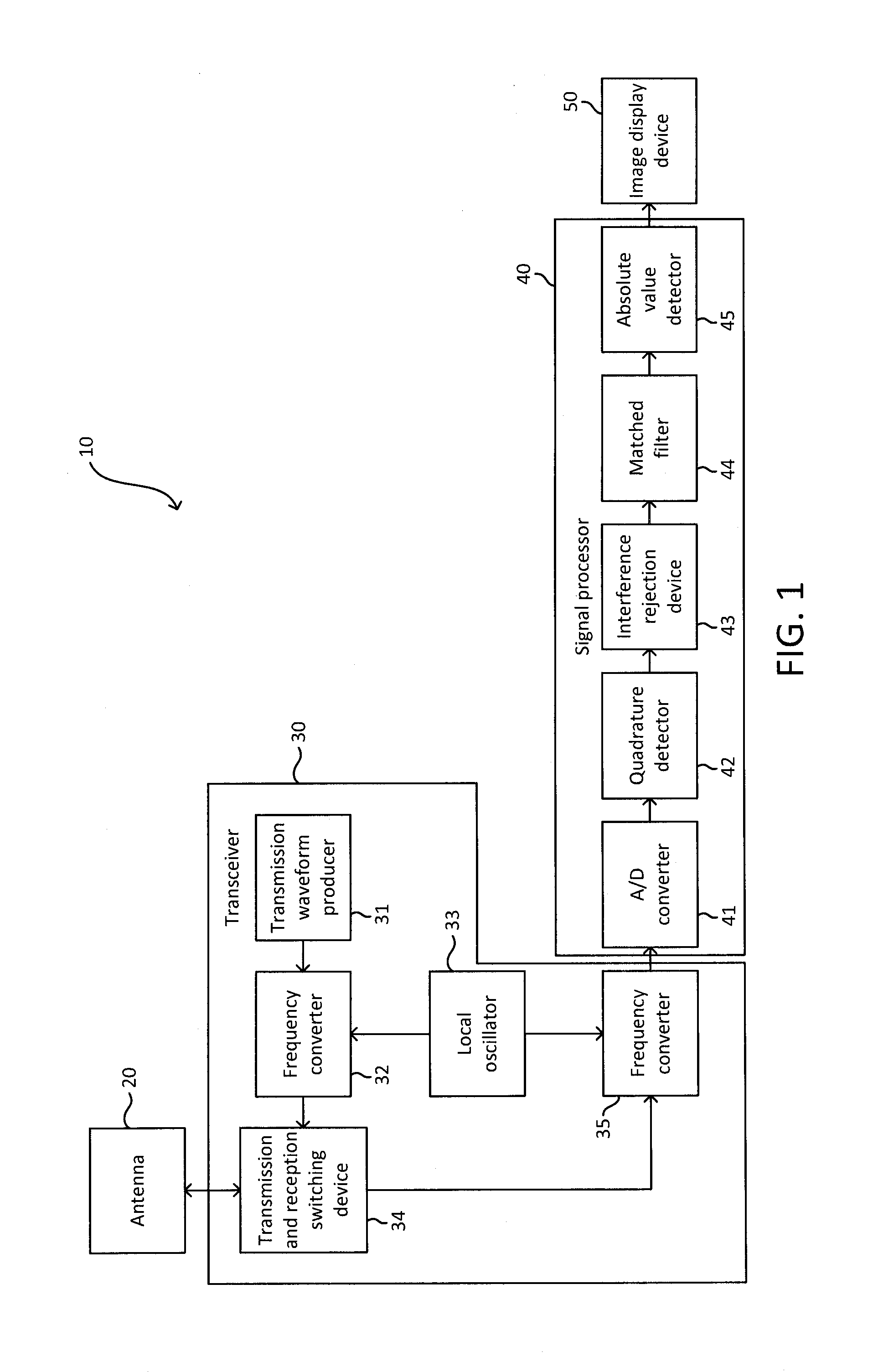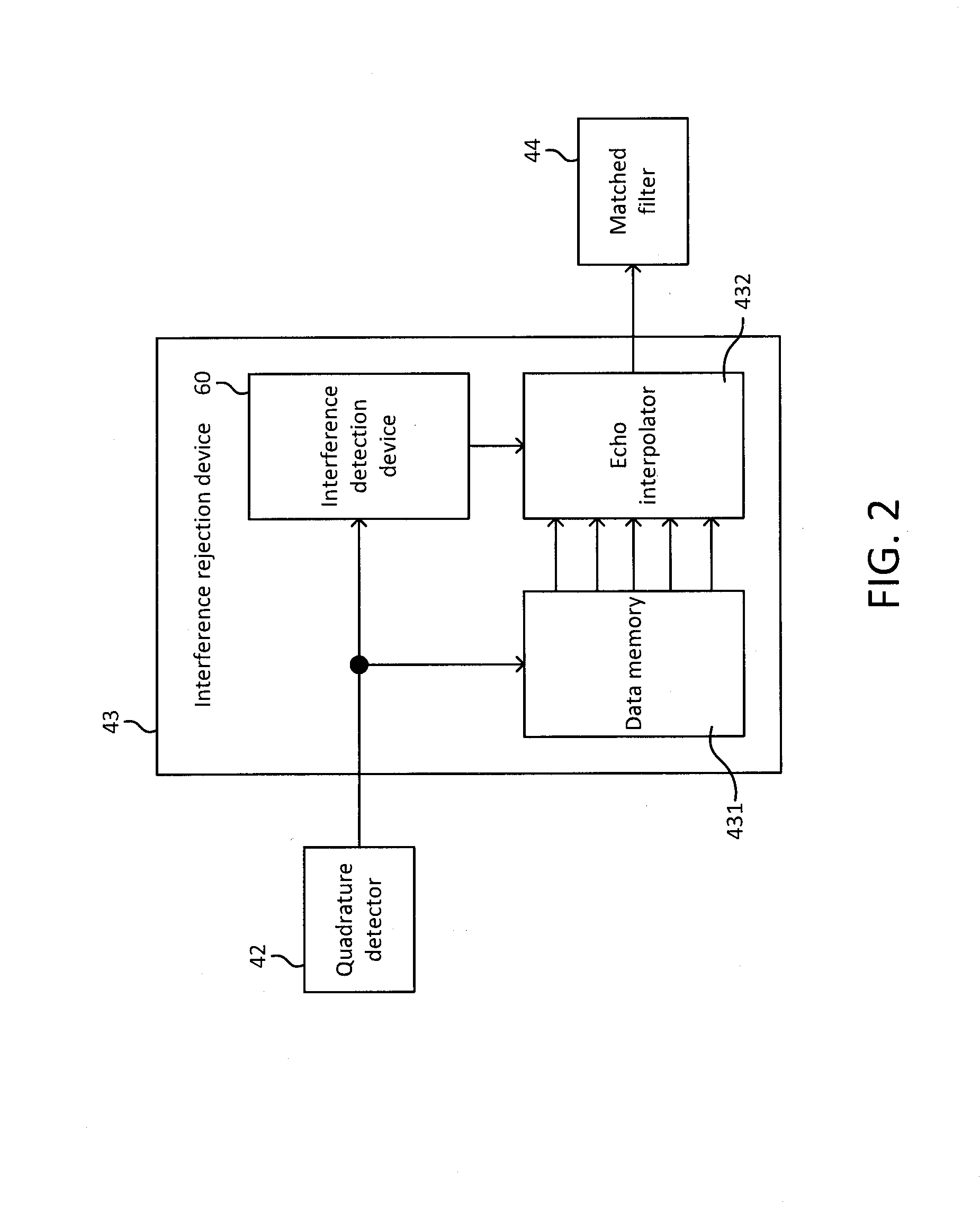Interference rejection device, radar device, and target finding method
a radar device and interference detection technology, applied in measurement devices, using reradiation, instruments, etc., can solve the problems of difficult detection of interference signals and inability to detect interference signals superposed over echo signals
- Summary
- Abstract
- Description
- Claims
- Application Information
AI Technical Summary
Benefits of technology
Problems solved by technology
Method used
Image
Examples
first embodiment
[0043]A radar device in accordance with a first embodiment of the present invention will be described through reference to the drawings. FIG. 1 is a simplified block diagram of the configuration of this pulse compression radar device (chirp radar). As shown in FIG. 1, a pulse compression radar device 10 includes an antenna 20, a transceiver 30, a signal processor 40, and an image display device 50. The pulse compression radar device 10 shown in FIG. 1 is provided to a ship, for example, and is used as a marine radar device for detecting targets such as other ships or buoys at sea, or land or the like. The pulse compression radar device 10 searches for targets using a chirp signal that has undergone frequency modulation, for example. The modulation and demodulation of pulse signals in the pulse compression radar device 10 are carried out by pulse compression processing. The various elements constituting the pulse compression radar device 10 will now be described in detail. A marine r...
modification example 1-1
[0106]In the above embodiment, a case in which the pulse compression radar device 10 used the chirp signal was described, but the modulated pulse signal is not limited to the chirp signal. The pulse compression radar device 10 can have the same configuration if the transmission waveform producer 31 produces a nonlinear frequency modulation signal, a code modulation signal, or another such modulation signal. In addition to the pulse compression radar device, the above method can also be applied to a radar device that makes use of unmodulated pulse signals.
modification example 1-2
[0107]In the above embodiment, the amplitude of the received signal was obtained from the complex received signals detected by quadrature using the amplitude calculator 61, but some other method can be used to obtain the amplitude value. For instance, the amplitude of the received signal can be obtained by performing envelope detection in which only amplitude information is taken out, or the like, and the method is not limited to one in which the amplitude is found from the absolute values of the complex received signals I and Q.
PUM
 Login to View More
Login to View More Abstract
Description
Claims
Application Information
 Login to View More
Login to View More - R&D
- Intellectual Property
- Life Sciences
- Materials
- Tech Scout
- Unparalleled Data Quality
- Higher Quality Content
- 60% Fewer Hallucinations
Browse by: Latest US Patents, China's latest patents, Technical Efficacy Thesaurus, Application Domain, Technology Topic, Popular Technical Reports.
© 2025 PatSnap. All rights reserved.Legal|Privacy policy|Modern Slavery Act Transparency Statement|Sitemap|About US| Contact US: help@patsnap.com



